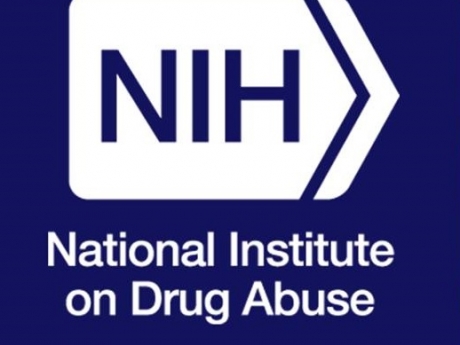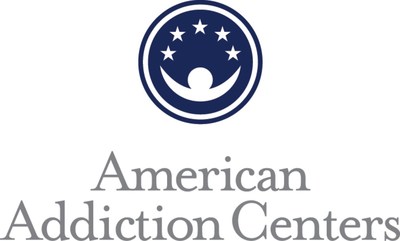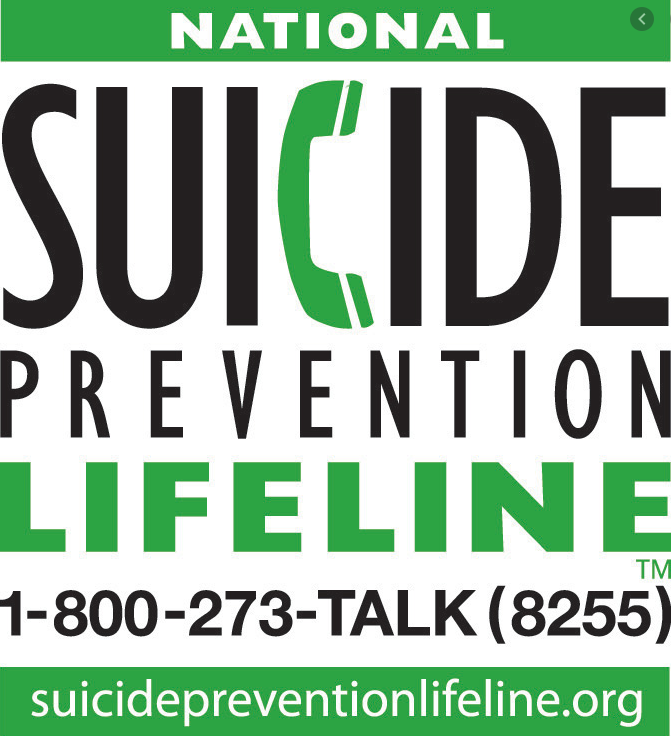Helpful Resources
Drug Addiction
Many people don’t understand why or how other people become addicted to drugs. They may mistakenly think that those who use drugs lack moral principles or willpower and that they could stop their drug use simply by choosing to. In reality, drug addiction is a complex disease, and quitting usually takes more than good intentions or a strong will. Drugs change the brain in ways that make quitting hard, even for those who want to. Fortunately, researchers know more than ever about how drugs affect the brain and have found treatments that can help people recover from drug addiction and lead productive lives.
Addiction is a disease that affects your brain and behavior. When you’re addicted to drugs, you can’t resist the urge to use them, no matter how much harm the drugs may cause. The earlier you get treatment for drug addiction, the more likely you are to avoid some of the more dire consequences of the condition.
Drug addiction isn’t about just heroin, cocaine, or other illegal street drugs. You can get addicted to alcohol, nicotine, sleep and anti-anxiety medications, and other legal substances. You can also get addicted to prescription or illegally obtained narcotic pain medications, or opioids. In 2018, two-thirds of all drug overdose deaths were caused by opioids.
At first, you may choose to take a drug because you like the way it makes you feel. It may help numb the pain and anxiety you’re feeling deep inside. You may think you can control how much and how often you use it. But over time, drugs change how your brain works. These physical changes can last a long time. They make you lose control and can lead to damaging behaviors that are hard to stop.
Addiction vs. Abuse
Drug abuse is when you use legal or illegal substances in ways you shouldn’t. You might take more than the regular dose of pills or use someone else’s prescription. You may abuse drugs to feel good, ease stress, or avoid reality. But usually, you’re able to change your unhealthy habits or stop using altogether.
Addiction is when you can’t stop. Not even when it puts your health in danger. Not even when it causes financial, emotional, and other problems for you or your loved ones. That urge to get and use drugs can fill up every minute of the day, even if you want to quit.
Addiction also is different from physical dependence or tolerance. In cases of physical dependence, withdrawal symptoms happen when you suddenly stop a substance. Tolerance happens when a dose of a substance becomes less effective over time.
The Danger of Laced Drugs
The danger of “laced” drugs isn’t new. Many of the substances sold on the street are laced with “cutting agents,” more potent substances or disguised as another drug altogether. These can be laundry detergent, talcum powder or rat poison. Marijuana can be laced with embalming fluid, or with PCP.
One of the most dangerous cutting agents is fentanyl, a synthetic opioid that is 50 to 100 times more powerful than morphine or heroin. Fentanyl has been discovered in cocaine, heroin other pain medications like Percocet and Oxycodone, and in prescription anxiety medications like Xanax.
Drug overdose deaths surpassed 100,000 for the first time in U.S. history in 2021, according to the CDC. Over 64,000 of those deaths were due to synthetic opioids like fentanyl. Synthetic drugs are often more deadly not only because of how strong they are, but also because of the ever-changing ways in which they are blended into other substances. This makes it difficult for people to know not only what they are taking, but also the strength of the drug. For that reason, using street drugs can lead to overdose or death even when a user thinks they’re taking a small amount of a “safe” recreational drug.
The Danger of Blacking Out from Benzodiazepines
Benzodiazepines, also known as “benzos,” are a class of pharmaceutical drugs developed to treat symptoms such as anxiety, panic attacks, or insomnia. Like any other drug, benzos will cause short and long-term side effects but the risk for abuse and dependence is higher than most other medications. Common examples of Benzodiazepines prescriptions are Xanax, Valium, Clonazepam, and Etizolam.
Blacking out on benzos is similar to blacking out from drinking alcohol, and the risk increases when combining benzodiazepines with alcohol. Both substances work on the gamma Aminobutyric acid (GABA) receptors of the brain, and when more natural GABA is present, communication between neurons slows down. Slowed communication means that memories do not go from short-term memory to long-term storage, resulting in what is known as “blacking out.” This is also called anterograde amnesia, a condition that impairs short-term and long-term memory creation, causing a complete inability to recall events that occurred during intoxication. While in a black out state, the person may lose contact with reality and get involved in dangerous behavior such as excessive substance abuse, sexual misconduct, and self-harm including suicide. Because their short-term to long-term memory mechanism is impaired, a person who is blacked out may continue to take more and more benzos or other drugs because they actually forget that they already took it! This can lead to drug overdose or death. Therefore, it’s vitally important that you do not allow the patient to be in possession of such drugs, especially when the container comes with a large number of pills. Rather, such drugs should be locked away and given to the patient as needed.
Please click on the links below to learn more about drug addiction and how you can find freedom for yourself or your loved ones.
GET HELP
rECOMMENDED REHAB CENTERS
Suicide Awareness
Suicide does not discriminate. People of all genders, ages, and ethnicities can be at risk. Suicidal behavior is complex, and there is no single cause. Over 45,000 people die from suicide each year in the United States; it is the 2nd leading cause of death among children and adolescents between the age of 10 and 24. Suicide is complicated and tragic, but it is often preventable. Knowing the warning signs for suicide and how to get help can help save lives.
Risk Factors
Many different factors contribute to someone making a suicide attempt. But people most at risk tend to share specific characteristics. The main risk factors for suicide are:
- Depression, other mental disorders, or substance abuse disorder
- Certain medical conditions
- Chronic pain
- A prior suicide attempt
- Family history of a mental disorder or substance abuse
- Family history of suicide
- Family violence, including physical or sexual abuse
- Having guns or other firearms in the home
- Having recently been released from prison or jail
- Being exposed to others’ suicidal behavior, such as that of family members, peers, or celebrities
Prevention
As children grow into teenagers and young adults, it becomes more challenging for parents to know what they are thinking and feeling. When do the normal ups and downs of adolescence become something to worry about? It’s important to learn about the factors that can put a teen at risk for suicide. Spend some time reading these ten ways you can help prevent a tragedy from occurring. The more you know, the better you’ll be prepared for understanding what can put your child at risk:
- Don’t let your teen’s depression or anxiety snowball – Maybe your child is merely having a bad day, but maybe it’s something more if this mood has been going on for a couple of weeks. Don’t wait for your kids come to you with their problems or concerns. Knock on the door, park yourself on their bed, and say, “You seem down. Would you like to talk about it? Maybe I can help.”
- Listen, even when your teen is not talking – Not all, but most kids who are thinking about suicide (this is called suicidal ideation) tip off their troubled state of mind through troubled behaviors and actions. Studies have found that one trait common to families affected by a son’s or daughter’s suicide is poor communication between parents and child. However, there are usually three or more issues or factors going on all at once in a child’s life at the time when he or she is thinking about taking his or her life. If your instinct tells you that a teenager might be a danger to himself, heed your instincts and don’t allow him to be left alone. In this situation, it is better to overreact than to underreact.
- Never shrug off threats of suicide as typical teenage melodrama – Any written or verbal statement of “I want to die” or “I don’t care anymore” should be treated seriously. Often, children who attempt suicide had been telling their parents repeatedly that they intended to kill themselves. Most research supports that people who openly threaten suicide don’t really intend to take their own lives; and that the threat is a desperate plea for help. While that is true much of the time, what mother or father would want to risk being wrong?
Any of these other red flags warrants your immediate attention and action by seeking professional help right away:
“Nothing matters.”
“I wonder how many people would come to my funeral?”
“Sometimes I wish I could just go to sleep and never wake up.”
“Everyone would be better off without me.”
“You won’t have to worry about me much longer.”
When a teenager starts dropping comments like the ones above or comes right out and admits to feeling suicidal, try not to react with shock (“What are you, crazy?!”) or scorn (“That’s a ridiculous thing to say!”). Above all, don’t tell him or her, “You don’t mean that!.” Be willing to listen nonjudgmentally to what he or she is really saying, which is: “I need your love and attention because I’m in tremendous pain, and I can’t seem to stop it on my own.” - Seek professional help right away – If your teenager’s behavior has you concerned, don’t wait to take action. Contact a local mental health provider who works with children to have your child or youth evaluated as soon as possible so that your son or daughter can start therapy or counseling if he or she is not in danger of self-harm. In some cases, medication might be necessary. However, call the Suicide Prevention Lifeline or or go to your local emergency room if you think your child is actively suicidal and in danger of self-harm.
- Share your feelings – Let your teen know he or she is not alone and that everyone feels sad or depressed or anxious now and then, including moms and dads. Without minimizing his anguish, be reassuring that these bad times won’t last forever. Things truly will get better and you will help get your child through counseling and other treatment to help make things better for him or her.
- Encourage your teen not isolate himself or herself from family and friends – It’s usually better to be around other people than to be alone. But don’t push if they says no.
- Recommend exercise – Physical activity as simple as walking or as vigorous as pumping iron can put the brakes on mild to moderate depression. Any form of exercise will do; what matters most is that children and youth enjoy the activity and continue to do it on a regular basis.
- Urge your teen not to demand too much of himself or herself – Until therapy begins to take effect, this is probably not the time to assume responsibilities that could prove overwhelming. Suggest that he or she divide large tasks into smaller, more manageable ones whenever possible and participate in favorite, low-stress activities. The goal is to rebuild confidence and self-esteem. Also, do not push your kids beyond their natural abilities. South Korea has one of the highest suicide rates in the world amongst teens because parents push their kids too hard to perform in school, sometime beyond their mental and emotional abilities.
- Remind your teen who is undergoing treatment not to expect immediate results – Talk therapy and/or medication usually take time to improve mood. Your child shouldn’t become discouraged if he or she doesn’t feel better right away.
- Secure weapons – If you keep guns at home or other weapons like knives that can be used for self-harm, store them safely or move them elsewhere until the crisis has passed.
In an Emergency
The Suicide Prevention Lifeline provides 24/7, free and confidential support for people in distress, prevention and crisis resources for you or your loved ones, and best practices for professionals.
If you or anyone you know is showing several of these signs, call this number right away! Do not delay!
- Talking about wanting to die or kill oneself
- Looking for a way to kill oneself
- Talking about feeling hopeless or having no purpose
- Talking about feeling trapped or being in unbearable pain
- Talking about being a burden to others
- Increasing the use of drugs and alcohol
- Acting anxious, agitated, or reckless
- Sleeping to little or too much
- Withdrawing from people and isolating oneself
- Showing rage or talking about revenge
- Displaying extreme mood swings
Mental Health
Mental illnesses are conditions that affect a person’s thinking, feeling, mood or behavior, such as depression, anxiety, bipolar disorder, eating disorders or addictive behavior. Such conditions may be occasional or long-lasting (chronic) and affect someone’s ability to relate to others and function each day. Contrary to common beliefs, mental illnesses are among the most common health conditions in the United States. More than 50% will be diagnosed with a mental illness or disorder at some point in their lifetime and 1 in 5 Americans will experience a mental illness in a given year.
The good news is that there are many treatment options in the form of therapy and medicine that can help you gain control of your mind and and result in a healthy and productive life!

Understanding Borderline Personality Disorder (BPD)
Overview
Borderline Personality Disorder (BPD) is one of the least understood mental disorders. It is characterized by difficulties regulating emotions. This means that people who experience BPD feel intense emotions and for extended periods of time, and it is harder for them to return to a stable baseline after an emotionally triggering events such as a breakup with a girlfriend, criticism or rejection from family or close friends, conflict at work, financial setbacks etc. This difficulty can lead to impulsivity, poor self-image, unstable relationships and intense emotional responses to stressors. Struggling with emotional self-regulation can often result in dangerous behaviors such as substance abuse, self-harm, and suicide as the person tries to numb the intense emotional pain they are feeling inside.
Those who suffer with borderline personality disorder, have an intense fear of abandonment, and may have difficulty tolerating being alone. Yet inappropriate behavior, impulsiveness and frequent mood swings may push others away, even though they want to have loving and lasting relationships.
BPD is a severe and chronic mental illness affecting around 6% of the population. Eight in ten people attempt suicide at least once and one in ten people with the disorder dies from suicide, usually due to impulsivity rather than chronic depression.
Symptoms may include:
- Efforts to avoid real or imagined abandonment, going to extreme measures to keep someone from leaving you.
- A pattern of intense and unstable relationships with family, friends, and loved ones, often swinging from extreme closeness and love (idealization) to extreme dislike or anger (devaluation)
- Hypersensitivity to criticism, blame, judgement or shaming
- Inability to cope with stressful situations
- Distorted and unstable self-image or sense of self
- Impulsive and often dangerous behaviors, such as substance abuse, reckless driving, unsafe sex, and binge eating.
- Self-harming behavior, such as cutting
- Recurring thoughts of suicidal behaviors or threats
- Intense and highly changeable moods, with each episode lasting from a few hours to a few days
- Chronic feelings of emptiness
- Difficulty trusting, which is sometimes accompanied by irrational fear of other people’s intentions
- Feelings of dissociation, such as feeling cut off from oneself, seeing oneself from outside one’s body, or feelings of unreality
BPD is one of the most challenging mental disorders to treat and is often misdiagnosed as bipolar disorder. Misdiagnosis can be a serious problem, as no medications have been approved by the Food and Drug Administration (FDA) for BPD. Medications for bipolar disorder are often ineffective in treating BPD. An effective treatment plan should include personal preferences while also addressing any other co-existing conditions the person may have. Examples of treatment options include psychotherapy; medications; and group, peer and family support. The overarching goal of treatment is for a person with BPD to increasingly self-direct their own treatment plan as they learn what works and what doesn’t. When seeking help for BPD it’s important that you deal with healthcare professionals that have extensive experience with this illness and are trained with psychotherapy techniques, in particular with Dialectical Behavioral Therapy. Here are some treatment options:
- Psychotherapy—such as dialectical behavioral therapy (DBT), cognitive behavioral therapy (CBT), Mindfulness therapy (MBCT), and psychodynamic therapy—is the first line of choice for BPD. Learning ways to cope with emotional dysregulation in a therapeutic setting is often the key to long-term improvement for those experiencing BPD.
- Medications may be instrumental to a treatment plan, but there is no one medication specifically made to treat the core symptoms of BPD. Rather, several medications can be used off-label to treat various symptoms. For example, mood stabilizers and antidepressants help with mood swings and dysphoria. And for some, low-dose antipsychotic medication may help control symptoms such as disorganized thinking.
- Short-term hospitalization may be necessary during times of extreme stress, and/or impulsive or suicidal behavior to ensure safety.
- Avoid triggers that could set them off – For example, avoid yelling at them and instead of criticizing them when they’re frustrated, validate how they feel and emphasize you’re there to help and support them.
- Do not place them in situations that could aggravate them – For example, don’t expect them to take four college classes at the same time or work a busy 50-hour week at a stressful job, especially when they’re still an adolescent. Only give them as much responsibilities as they can handle and provide them with a safe and calm environment at home.
- Be compassionate – All your interactions should be done in love and compassion. Remember, they are highly sensitive to criticism and rejection. So instead of getting mad when they didn’t do something right, validate their frustration and offer your help.
- Communicate clearly – People with BPD often misinterpret language or facial expressions and may not understand your true intentions. To prevent that from happening, be very specific when speaking to them. For example, instead of saying, “I’m busy right now, I can’t talk!” say, “I’m sorry, I’m really busy right now and I have to get this project done, but I should be done in around 30 minutes and then we can talk, ok?”
- Keep them close – People with BPD can very quickly go from feeling on top of the world to becoming suicidal because someone hurt their feelings or they got fired from their job. For that reason, you should avoid letting someone with BPD from living by themselves and handle the stresses of life on their own. They need to be in the company of a responsible adult whenever possible and any instruments that could be used for self-harm (i.e., guns, drugs, knives, ropes) should be secured and put out of reach.
- Keep them busy – People with BPD often live in their heads and spend a lot of time thinking about their troubles and pain. The best thing you can do to help them is keeping them busy with activities they enjoy. This can vary from enrolling them in sporting activities or working on projects around the house. As they say, “an idle mind is the devils workshop!”
Dealing with Stigma
Addiction is never what you think it looks like. It stems from trauma, it stems from mental health issues, it stems from pain. More than half of people with mental illness don’t receive help for their disorders. Often, people avoid or delay seeking treatment due to concerns about being treated differently or fears of being looked down upon by their family and friends or losing their jobs and livelihood. That’s because stigma, prejudice and discrimination against people with mental illness is still a big problem in our society.
Stigma, prejudice and discrimination against people with mental illness can be subtle or it can be obvious—but no matter the magnitude, it can lead to harmful consequences. People with mental illness are marginalized and discriminated against in various ways, but educating ourselves about the reality of mental health and taking steps to support those suffering with it can make a world of a difference.
Fear, misunderstanding, and personal beliefs can often lead to prejudice against people with mental illness and addictions. Sadly, many people don’t consider it a real health issue and think “It’s all in their head!” The erroneous notion that mental health is a spiritual or emotional issue rather than a real physiological disorder in the brain can cause untold damage and pain to those dealing with the condition. This prejudice and discrimination leads to feelings of hopelessness and shame in those struggling to cope with their situation, and often prevents them from getting diagnosed and treated and sometimes even leads to self-harm and suicide!
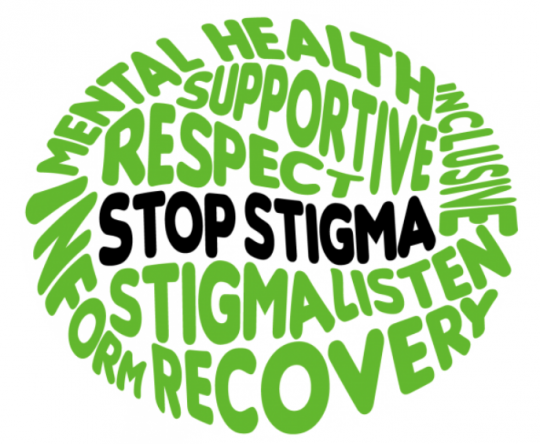
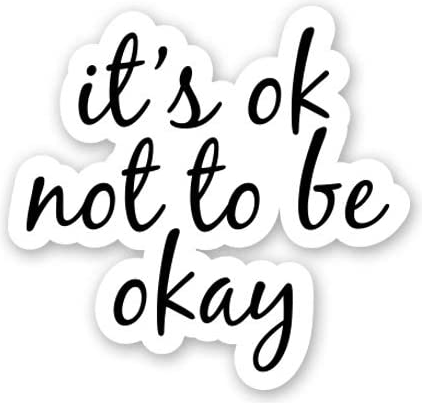
Here are some ways you can deal with stigma:
- Get treatment. You may be reluctant to admit you need treatment. Don’t let the fear of being labeled with a mental illness prevent you from seeking help. Treatment can provide relief by identifying what’s wrong and reducing symptoms that interfere with your work and personal life. Treatment should include therapy and medicine if needed.
- Don’t let stigma create self-doubt and shame. Stigma doesn’t just come from others. You may mistakenly believe that your condition is a sign of personal weakness or that you should be able to control it without help. Seeking counseling, educating yourself about your condition and connecting with others who have mental illness can help you gain self-esteem and overcome destructive self-judgment.
- Don’t isolate yourself. If you have a mental illness, you may be reluctant to tell anyone about it. Your family, friends, clergy or members of your community can offer you support if they know about your mental illness. Reach out to people you trust for the compassion, support and understanding you need.
- Don’t equate yourself with your illness. You are not an illness. So instead of saying “I’m bipolar,” say “I have bipolar disorder.” Instead of calling yourself “a schizophrenic,” say “I have schizophrenia.”
- Join a support group. Some local and national groups, such as the National Alliance on Mental Illness (NAMI), offer local programs and internet resources that help reduce stigma by educating people who have mental illness, their families and the general public. Some state and federal agencies and programs, such as those that focus on vocational rehabilitation and the Department of Veterans Affairs (VA), offer support for people with mental illness.
- Get help at school. If you or your child has a mental illness that affects learning, find out what plans and programs might help. Discrimination against students because of a mental illness is against the law, and educators at primary, secondary and college levels are required to accommodate students as best they can. Talk to teachers, professors or administrators about the best approach and resources. If a teacher doesn’t know about a student’s disability, it can lead to discrimination, barriers to learning and poor grades.
- Speak out against stigma. Consider expressing your opinions at events, in letters to the editor or on the internet. It can help instill courage in others facing similar challenges and educate the public about mental illness.
Mental Health resources
Gun Measures to reduce suicide
Nearly two-thirds of all gun deaths in the U.S. are suicides and is the 2nd leading cause of death among teens, resulting in an average of 64 deaths a day! Research shows that having access to a firearm triples one’s risk of death by suicide. There is a popular misconception that suicide is inevitable, that suicidal ideation is a permanent condition. But most people who attempt suicide do not die—unless they use a gun. Across all suicide attempts not involving a firearm, 4 percent will result in death. But for gun suicide, those statistics are flipped: Approximately 90 percent of gun suicide attempts end in death and the vast majority of all those who survive a suicide attempt do not attempt it again and end up dying from natural causes later in life. This suggests that a reduction in suicide attempts by firearm would result in an overall decline in the suicide rate. Sadly, existing gun laws in the United States have many loopholes that do not always prevent those suffering from mental health conditions from acquiring a firearm.
On November 30, 1993, the Brady Handgun Violence Prevention Act was enacted, amending the Gun Control Act of 1968. The Brady Law imposed as an interim measure a waiting period of 5 days before a licensed importer, manufacturer, or dealer may sell, deliver, or transfer a handgun to an unlicensed individual. The Brady Bill requires that background checks be conducted on individuals before a firearm may be purchased from a federally licensed dealer, manufacturer or importer—unless an exception applies. If there are no additional state restrictions, a firearm may be transferred to an individual upon approval by the National Instant Criminal Background Check System (NICS) maintained by the FBI. Since its inception, the five-day waiting period mandated was replaced with the instant check system. While most checks are instant, the FBI actually has three days to complete the background check before the transfer can be proceed.
Who Cannot Buy a Gun?
Between 2001 and 2011, the FBI reports that over 100 million Brady Act background checks were performed, resulting in more than 700,000 gun purchases being denied. People who may be prohibited from purchasing a firearm as a result of data obtained from the NICS background check include:
- Convicted felons and people under indictment for a felony
- Fugitives from justice
- Unlawful drug users or drug addicts
- Individuals who have been determined to be mentally incompetent
- Illegal aliens and legal aliens admitted under a non-immigrant visa
- Individuals who have been dishonorably discharged from the military
- People who have renounced their American citizenship
- People under domestic violence restraining orders
- People convicted of misdemeanor domestic violence crimes
A Brady Act gun buyer background check can have five possible outcomes:
- Immediate Proceed: The check found no disqualifying information in the NICS and the sale or transfer can proceed subject to state-imposed waiting periods or other laws. Of the 2,295,013 NICS checks done during the first seven months the Brady Act was enforced, 73% resulted in an “Immediate Proceed.” The average processing time was 30 seconds.
- Delay: The FBI determined that data not immediately available in the NICS needs to be found. Delayed background checks are typically completed in about two hours.
- Default Proceed: When a National Instant Criminal Background Check System check cannot be completed electronically (5% of all checks), the FBI must identify and contact state and local law enforcement officials. The Brady act allows the FBI three business days to complete a background check. If the check cannot be completed within three business days, the sale or transfer may be completed although potentially disqualifying information might exist in the NICS. The dealer is not required to complete the sale and the FBI will continue to review the case for two more weeks. If the FBI discovers disqualifying information after three business days, they will contact the dealer to determine whether or not the gun was transferred under the “default proceed” rule.
- Firearm Retrieval: When the FBI finds that a dealer has transferred a gun to a prohibited person due to a “default proceed” situation, local law enforcement agencies, and ATF are notified and an attempt is made to retrieve the gun and take appropriate action, if any, against the buyer. During the first seven months, the NICS was in operation, 1,786 such firearms retrievals were initiated.
Denial of Purchase: When the NICS check returns disqualifying information on the buyer, the gun sale is denied. During the first seven months of NICS operation, the FBI blocked 49,160 gun sales to disqualified people, a denial rate of 2.13 percent. The FBI estimates that a comparable number of sales were blocked by participating state and local law enforcement agencies. - Denial of Purchase: When the NICS check returns disqualifying information on the buyer, the gun sale is denied. During the first seven months of NICS operation, the FBI blocked 49,160 gun sales to disqualified people, a denial rate of 2.13 percent. The FBI estimates that a comparable number of sales were blocked by participating state and local law enforcement agencies.
Typical Reasons for Denial of Gun Purchases:
Between 1998 and 2009, 95 million potential buyers records were scanned. Of those, just 0.03 percent were denied a gun over mental illness concerns. Here is how mental illness stacks against other reasons for denial of a gun purchase:
- 76 percent – Criminal history of a felony
- 8 percent – Criminal history of domestic violence
- 6 percent – Criminal history of other offenses (multiple DUIs, non-NCIC warrants, etc.)
- 3 percent – Criminal history of drug abuse
- 3 percent – Domestic violence restraining orders
- 0.03 percent – Mental Illness concerns
What About the Gun Show Loophole?
While the Brady Act has blocked more than three million gun sales to prohibited purchasers since taking effect in 1994, up to 40 percent of gun sales occur in “no questions asked” transactions that often take place over the Internet or at gun shows where, in most states, background checks are not required.
As a result of this so-called “gun show loophole,” the Brady Campaign to Prevent Gun Violence estimates that about 22% of all gun sales nationwide are not subjected to Brady background checks.
In an effort to close the loophole, the Fix Gun Checks Act of 2015 (H.R. 3411) was introduced in the House of Representatives on July 29, 2015. The bill, sponsored by Rep. Jackie Speier (D-Calif.), would require Brady Act background checks for all gun sales including sales made over the Internet and at gun shows. Since 2013, only six states have enacted similar laws.
